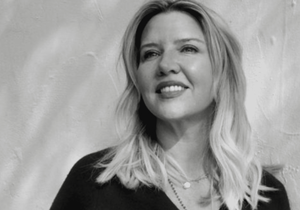This article is part of a weekly series adapted from our latest book, "The 9 Lives of Women," by our founder, Christine Marie Mason.
Do They Like Me? In this age group, navigating the labyrinth of discovering someone's feelings is an age-old challenge. From relying on friends to dropping hints, guessing, and nowadays, deciphering emojis and text pacing, figuring out if someone likes you has always been a complex dance- from Shakespeare's Romeo and Juliet to Tiger Beat, to K-Pop, the swoony crush years remain strikingly similar.
In this stage, we notice how inviting young girls into developing quality romantic relationships can start with noticing the quality of friendships. We learn to look for some of the same things in relationship as in friendship: authenticity, kindness, no game-playing, and shared values—maybe inviting people in who bring a sense of play or discovery, or a shared mission, or open communication into our lives. We can also be taught early to recognize signs of disrespect and abuse that can happen in friendships and in dating and how to exit that.
A great friendship is characterized by mutual respect, trust, and a genuine concern for each other's well-being. In a healthy friendship, both individuals feel valued and appreciated. They support each other's goals and celebrate successes without jealousy. Communication flows easily and openly, allowing for the sharing of thoughts and feelings without fear of judgment. Friends in a healthy relationship listen to each other actively and empathetically, offering advice and assistance while respecting boundaries and individual differences.
A strong friendship is marked by a sense of security and comfort in each other's presence, where both individuals can be their authentic selves without the need to put up a facade. Conflicts are resolved through constructive dialogue and a willingness to understand each other's perspectives, reinforcing the bond rather than weakening it.
Conversely, signs of an abusive friendship can be subtle but profoundly damaging. An abusive friendship often involves a significant imbalance of power, where one person dominates and controls the other. This control can manifest through constant criticism, belittling remarks, and an overall lack of respect for the other person's feelings and opinions. Instead of mutual support, there is a pattern of manipulation, where the abusive friend exploits vulnerabilities and pressures the other into uncomfortable or harmful situations.
In such relationships, communication is often fraught with fear and anxiety. The abusive friend may use guilt, shame, or intimidation to maintain control, leading the other to feel trapped and isolated. Trust is repeatedly broken, and the victim of the abuse may find themselves constantly walking on eggshells, fearing the next outburst or act of aggression. This toxic dynamic can erode self-esteem and leave lasting emotional scars, making it difficult for the affected individual to trust others in future relationships.
Helping a developing human choose to honor themselves in relationship is a key task of the age.
____
Three games which can help us recognize the body’s true knowing (for all ages)
Body Mapping
On large sheets of butcher block paper, trace each other's body outlines. Use colored markers to draw where you feel a "hell yes" in your body (e.g., heart, hands, feet) and where you feel a "no" (e.g., stomach, shoulders). Compare maps and talk about the different sensations and what they mean. This can also be used to discuss the relationship and perception of the body in general, like a perceptual map.
Mirror Dance
Put on some fun music and take turns leading a dance. When one leads, they express a "hell yes" feeling through their dance moves, while the other mirrors them. Then, switch roles. Repeat the exercise with "no" feelings. After dancing, talk about how each movement felt and how the emotions were expressed through dance.
Emotion Charades
First, write different scenarios on slips of paper, some that might evoke a “yes" and some that might evoke a "no." Take turns drawing a slip and acting out the scenario without words, using only body language. Guess the scenario and discuss how you could tell it was a "yes" or "no."






















